
What It's Like Being Verified on Twitter
Update: After this post was published, I had a chance to talk about Twitter verification at a live show of the Untitled Kondabolu Brothers Project, with Hari and Ashok Kondabolu. It turned out pretty well.
Twitter verification is an interesting phenomenon on the service; It’s very visible since everybody sees and follows accounts which are verified, but also sort of secretive because nobody really knows how it works or how Twitter defines the criteria behind having one’s account blessed.
It seems like Twitter verifies certain accounts in waves, bringing in new batches of verified users on an ongoing basis, with an obvious bias toward people who are famous, but also including those who might be impersonated or the occasional odd exception for people (like me) who aren’t famous but happen to have a large following.
I can’t explain how Twitter makes the decision to verify an account, but after seeing another recent spate of users being verified, I thought I’d give a little glimpse into what the experience looks like. (I’m told that some celebrities who are invited to use Twitter or coached on its use skip this process, but this is what us non-celebs see.)
- First, you wake up on a day that seems like any other day, but then, out of the blue: It’s a direct message from the mysterious @verified account! It says “We at Twitter would like to verify your account. Please click this account and follow the instructions.” and then gives you a link to a little guided setup process. I got this on my mobile phone, and wasn’t surprised to find out the whole thing works just fine on an iPhone.
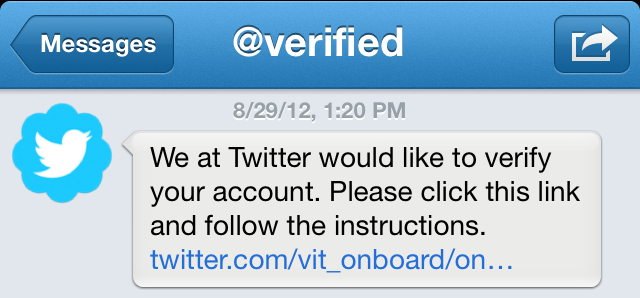
- The first thing the setup guide says is “Hi!” and then it explains “Twitter’s verified badge is our way of making sure that this is you.”
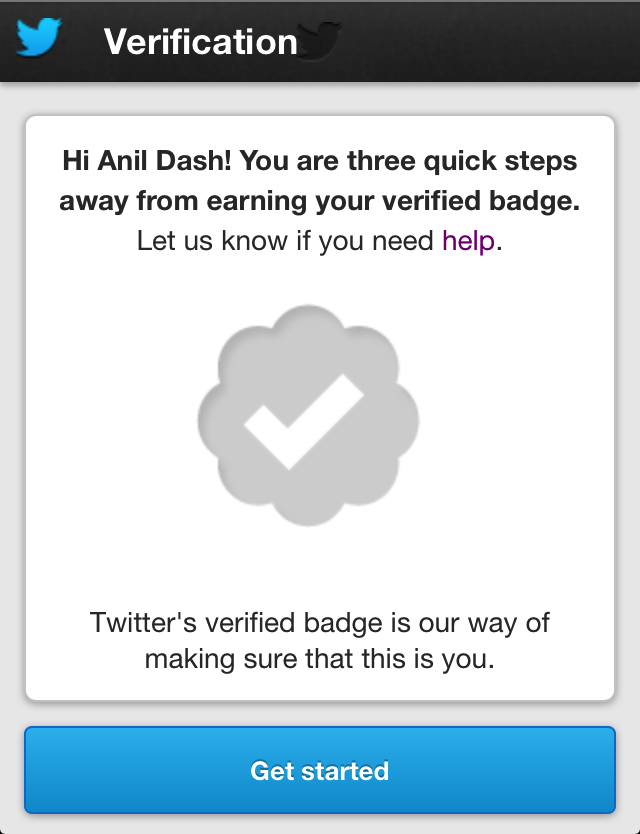
- Then Twitter starts to give a few bits of advice on how to be a good tweeter; These are clearly aimed at people who aren’t too familiar with the service. Interestingly, they’re grouped under the heading of “Learn how to tweet effectively.” Each one offers a sort of Goofus-and-Gallant version of “which one is better?” and the first asks explicitly, “Which Tweet will help double your rate of new followers for the day?”. The choices in this first test are between a bland recitation of having watched the Oscars and a little more lively take on watching the show.
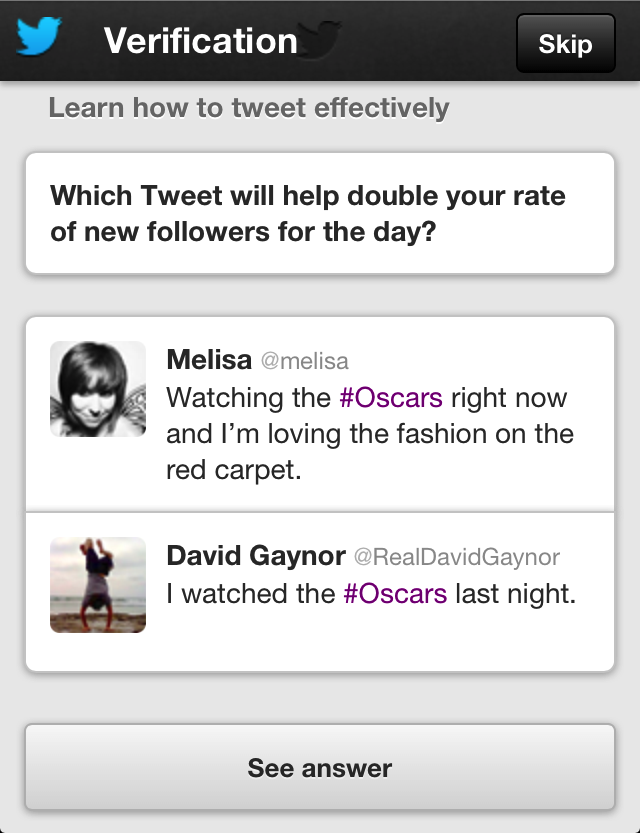
- The next step of the guide tells you when you’ve made the right choice about how to tweet effectively, offering the tidbit that “Live-tweeting a relevant event can increase your daily follower rate by 260%.” Pretty heavy promotion of the Twitter-is-for-celebrities idea.
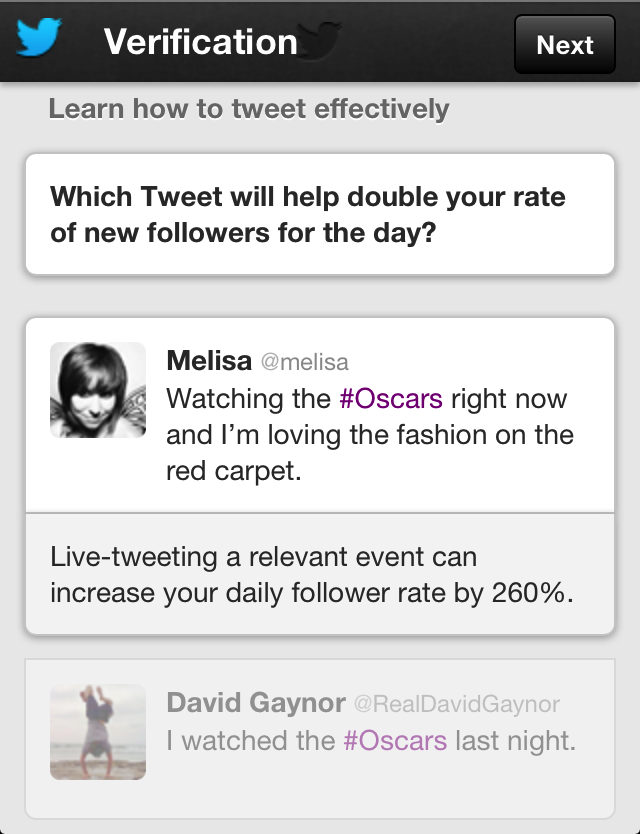
- After that, there’s another quiz question: “Which Tweet will more of your followers engage with?”. Interestingly, this mimics one of the big things we’ve learned from working on ThinkUp — you have to ask answerable questions on Twitter. It seems obvious in retrospect, but lots of people don’t do it.
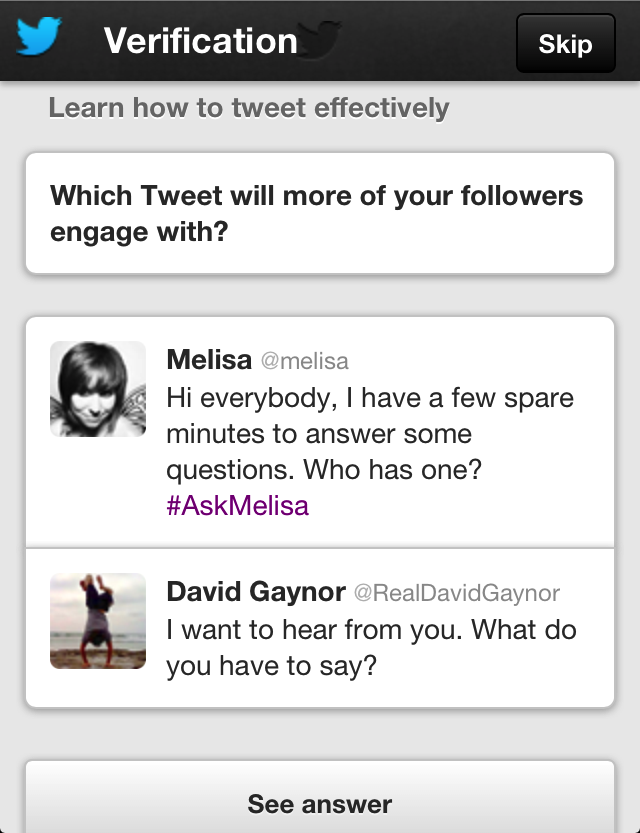
- Again the indomitable Melisa provides the right answer to Twitter’s training class, yielding the insight that “Your audience loves to interact with you. Invite questions for a Twitter Q&A to increase your followers and engagement!”
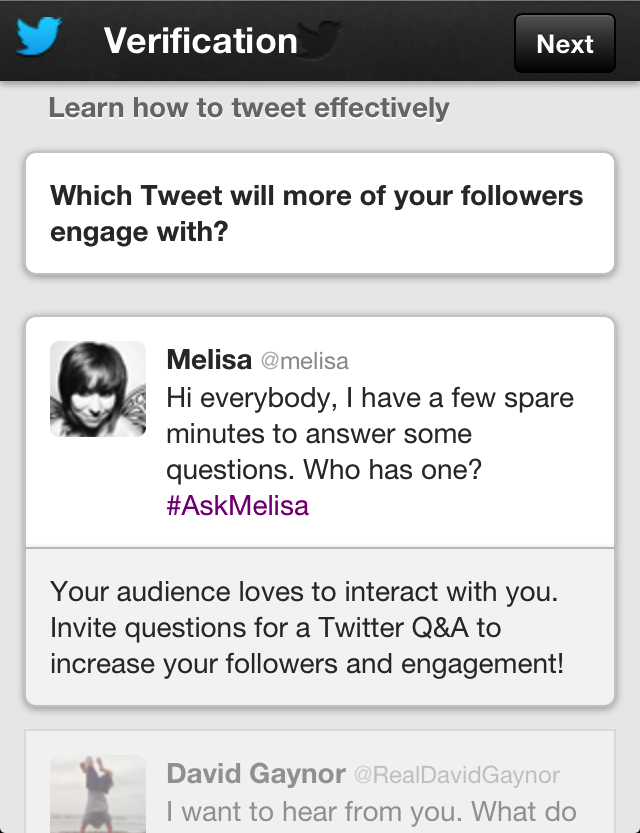
- A final question, fundamentally challenging the about-to-be-verified tweeter about whether they know how to drive their biggest stats on Twitter: “Which Tweet will get more clicks, favorites and retweets from your followers?” In addition to boldly eschewing the Oxford comma (U.S.A.! U.S.A.!), they provide two options on how to talk about running into Taylor Swift backstage at the Grammies, which happens to all of us blue checkmark people all the time. One choice is awesome and has a photo and the other choice is for idiots.

- Okay, you did it! You passed the test. (I didn’t grab a picture of whatever affirmation they offer after the third “Learn how to Tweet effectively” page.) So now it tells you to “Increase your trustworthiness by following other verified users”, which in my case included Gavin Newsom, who was formerly the Mayor of the hair club for men. I did not follow him (instead I clicked “Next”) but they let me become verified anyway, and I have not yet heard any complaints about my diminished trustworthiness.
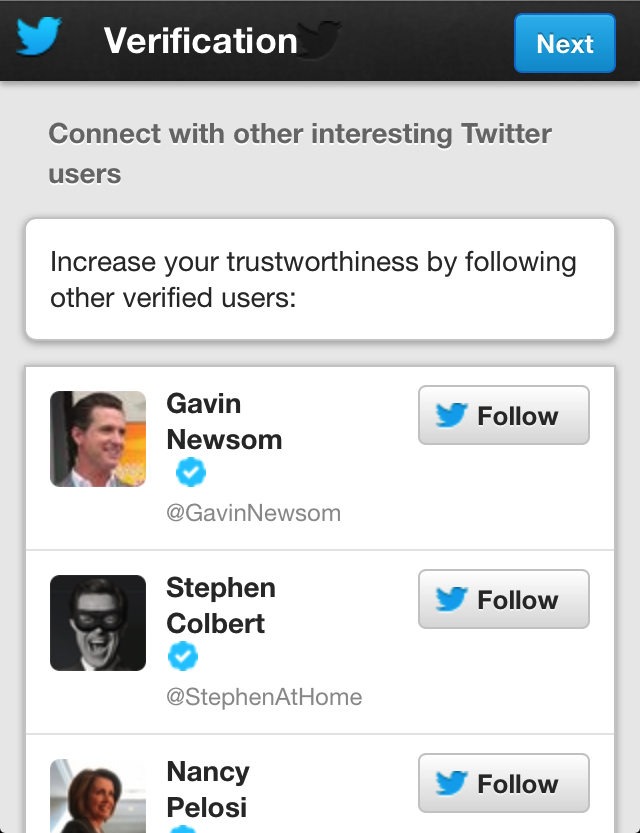
- After all this setup, they get down to the nuts-and-bolts stuff, telling you to “Protect your account”, by asking for your phone number. “Phone numbers allow us to contact you in case there is a security issue with your account”, which made me think someone has the job at Twitter’s office of calling celebrities and asking them “Is this stupid tweet really from you?”
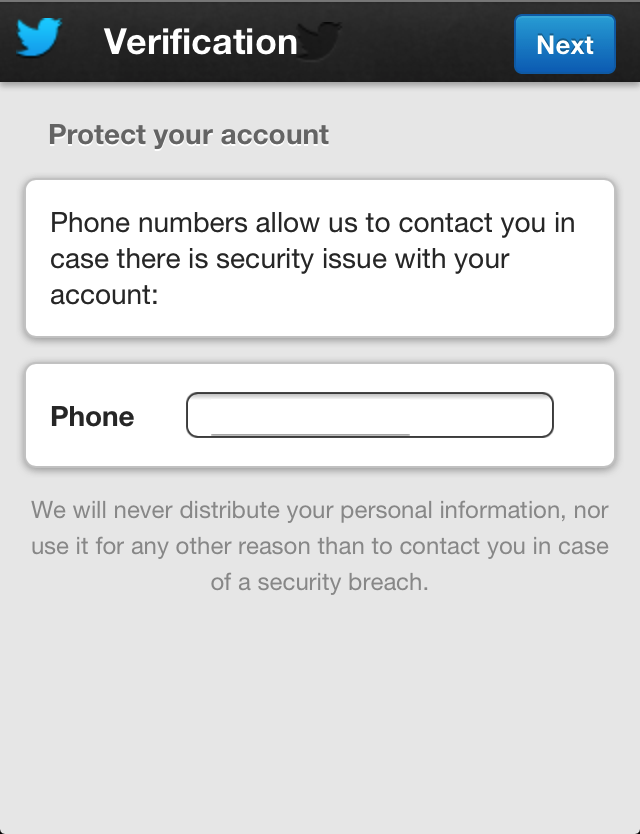
- Success at last. A happy little confirmation screen (which oddly didn’t show up properly on my iPhone browser) affirms that you’re now a proud new owner of one blue checkmark on your Twitter profile. Fawning followers sold separately. The very top of the screen says “Congratulations, [your name]! Your Twitter account is now verified!” The fine print says, “With your newly verified account, you will receive weekly activity reports with information about the number of people following you, and simple tips about how to increase that number. Stop getting the report by choosing ‘unsubscribe’ in the email footer, or uncheck the box in your email notification settings in your profile settings.” That weekly email seems to be the same one that everybody else gets (I get it for my other Twitter accounts), but I was verified about six months ago, so maybe they just extended the verified email to everyone when they added those notifications.
![Congratulations, [your name]! Your Twitter account is now verified! Congratulations, [your name]! Your Twitter account is now verified!](https://cdn.glitch.global/c4e475b2-a54e-47e0-973c-ed0bd1b46262/tverified-10-confirmation.png?v=1670476503039)
- And then a little postscript. This is the notification I received immediately after finishing the verification process. It let me know that the official @verified account was following me. I followed it back, which reminded me that I hadn’t been following it in the first place, so how had it send me the DM to start the process?! Twitter Magic.
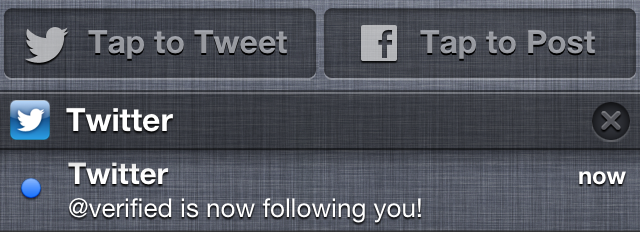
Life With the Blue Checkmark
Other than of course gaining membership to an exclusive worldwide Illuminati cabal, there really isn’t any difference in using Twitter when you’re verified. Some folks think it matters a lot, and there are definitely teenagers (and aspiring hip hop acts?) who desperately want a verified checkmark next to their name, judging by the rash of @ replies I got immediately after verification, from people asking how they could be verified.
One minor thing I’ve noticed is that verified accounts have access to Twitter’s analytics, which I think are otherwise only accessible to advertisers. Users who got verified because Twitter officially brought them onto the service (who don’t go through this setup process) have told me that Twitter actually showed them the analytics features. In my case, I didn’t know I had access to it until I accidentally discovered that fact, and this setup process didn’t give any hints to that fact.
In all, despite the oddly celebrity-centric nature of the tips they give users in the setup, I think Twitter’s designed a good process for users that they want to verify. In fact, the coaching concept is terrific and should probably be incorporated into everybody’s Twitter experience somehow. It’s obviously far too intrusive to put into the signup flow for regular users, and the tips as written are only appropriate for bigger accounts, but the idea of teaching people how to tweet is a great one.
That fundamental idea, that we can teach people how to use social media more effectively, is in fact one of the big goals for what we’re working on with ThinkUp. In our case, though, I think we assume users can have a more goals than simply increasing your daily follower rate or, um, your trustworthiness. Although those are fine goals, too, I think normal users have a broad range of things they’re looking to get out of their networks.
Beyond Verification
I spend a lot of time around very digitally-savvy Twitter users, who sort of understand the Verified checkmark to be an arbitrary, Twitter-run program. But the less tech-savvy folks I talk to, if they’re familiar with the Verified marker, see it as much more of a status symbol.
What I’d love to see is ways to either make more accounts have meaningful verification (I’m not sure how that would scale) or at least ways to indicate a Twitter account is an “official” one for a particular website or organization. Twitter’s analytics tools already allow me to claim my domain name and get stats on tweets about it; Being able to verify that @anildash is the official Twitter account of Dashes.com might be a happy medium between verifying every account on Twitter and simply providing another layer of trust and identity on top of Twitter’s existing account names.